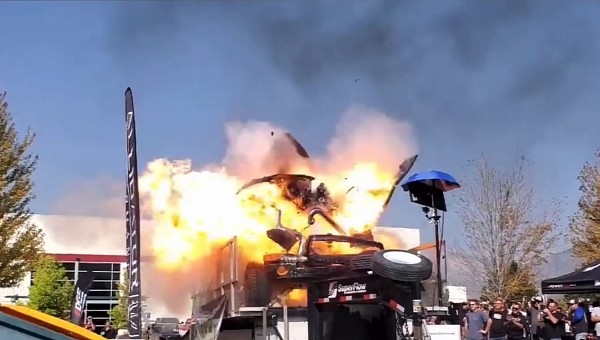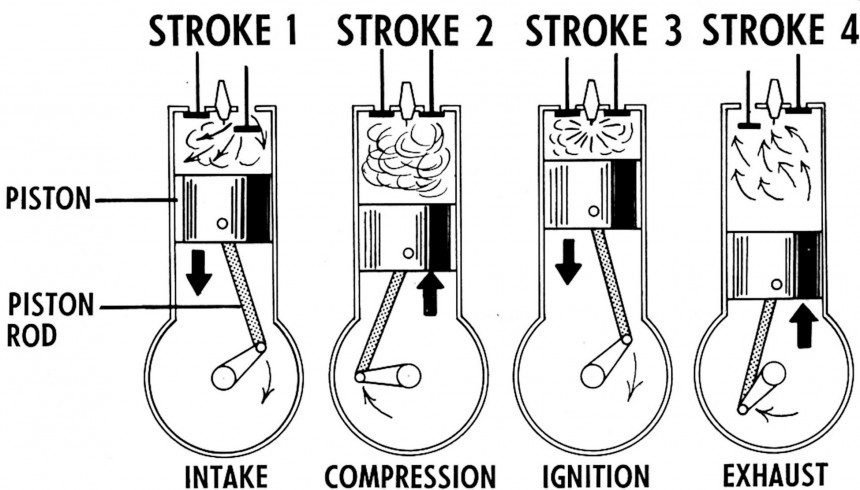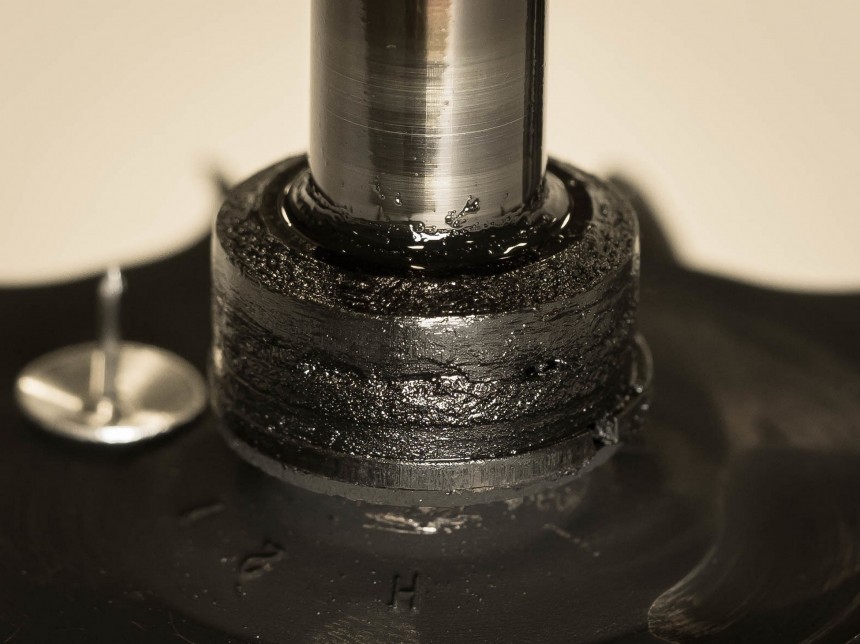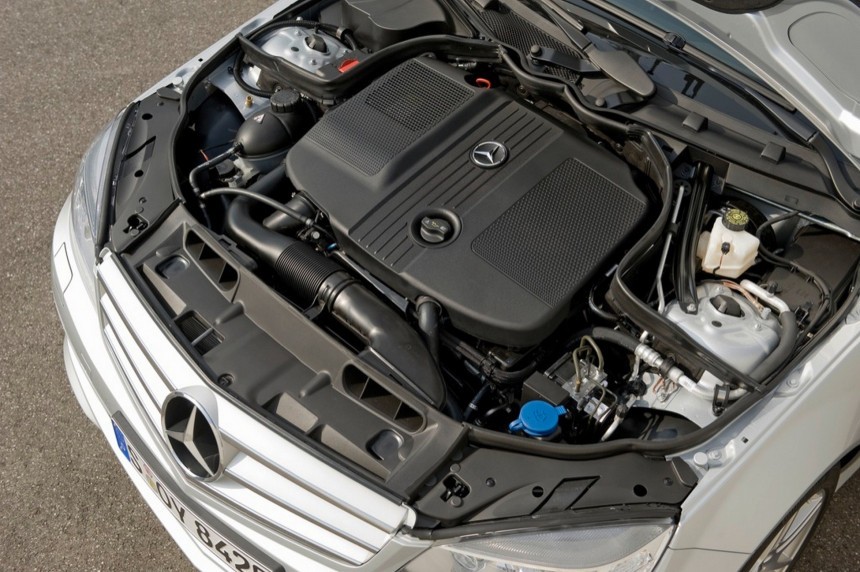Imagine that you're getting on board your old diesel truck, turn it on, and instead of the low-revs rattling sound, you'll hear it revving up uncontrollably. Even though that's not common, it may happen and can lead to engine damage in the best-case scenario. So, what can you do?
The situation when a diesel engine starts to rev up uncontrollably is known as a runaway, and it can happen for various reasons. To understand them, first, you need to know how such a powerplant works. Thus, you'll know how to prevent and stop such a nasty situation.
Due to this system, patented by Rudolf Diesel in 1892, in Germany, this engine needs air and fuel like any other. But that fuel can vary. Initially, the German engineer made it run with vegetable oil. So if you're using sunflower oil in a 1970s Mercedes-Benz 300 SD, it will run just fine. Albeit, you'll fill the neighborhood with a strong smell of french fries.
A diesel engine doesn't have a throttle body like a gasoline-powered one. Thus, the air flows freely inside the engine, and the power is controlled by the fuel quantity sent through the injectors. So, as long as there is some sort of fuel to burn, the engine will run uncontrollably.
Many such powerplants feature mechanical fuel pumps, so as long as the engine turns, they can get their dinosaur juice from the fuel tank. The first diesel-powered car I've ever driven featured a lever on the dashboard, which I had to pull in order to shut the fuel line and stop the engine. On newer vehicles, you don't need to do that anymore since they feature electrical fuel pumps, so all you have to do is turn off the ignition, which will do the job.
So, if there are fuel vapors around the intake manifold, they will get sucked in by the engine and get ignited by the hot compressed air. Also, the oil used to lubricate the turbochargers might leak and get inside the cylinders, and yes, that will ignite too. Moreover, that will turn the turbine faster; thus, more air and oil will get inside the engine and, due to the compression, will burn. So, basically, the engine will consume itself to destruction.
"Old and busted" works for oil sent into the engine via the crankcase ventilation as well. The crankcase is connected via hoses to the intake to ventilate the oil mist created when the engine runs. If the piston rings are old, they won't properly seal the combustion chamber during the explosion, letting pressurized gas enter the crankcase below, pushing more mist into the intake, and so on.
Modern engines have many safety systems that could prevent that and limit the amount of fuel sent to the injectors. But they won't be able to control the oil leaks or the fuel vapors around. Moreover, these systems don't have a way to shut down the air intake. Sure, some aftermarket butterfly valves can be installed on the car and choke the turbocharger, leading to an engine stop regardless of the fuel coming from uncontrolled sources. But most people never bother to install such a device. I didn't do that on my old Merc' that could run on sunflower oil, either.
Now that you know how a diesel engine works and how it can get into a runaway situation, let's focus on how to prevent it. First of all, you must check the oil level regularly. If it's increased, you should be concerned since that might trigger a runaway situation. An oil change might fix that, but keep checking it afterward. If that happens again, you will need a new engine or, at least, new piston rings.
For vehicles fitted with an automatic transmission, you'll need a fire extinguisher. Pop the hood and empty that into the air intake. The CO2 from that will choke the engine. Another way is to get a piece of cardboard or something rigid and firmly cover the air intake. But if that is not air-tight, it might not be enough. Please note that this is a dangerous situation since the engine might blow up in your face. So you might apply the parking brake, get out of the vehicle, and run in the back. Let the damn' thing shred to pieces.
If you just started the engine and you'll hear it revving up high without touching the accelerator, you have to act very fast. On a car fitted with a manual transmission, you must use the same method mentioned above by selecting the highest gear and using the brakes. If it's an automatic, don't put it into drive since that will rocket the car uncontrollably. To stop it, you should do as mentioned by blocking the air intake with a rag, a piece of cardboard, or plywood. If you don't know exactly where the intake is, just get out of the vehicle and run toward the back of it. After all, it's much easier to replace an engine than an arm or a finger.
Diesel working principle
Diesel engines are compression-ignited powerplants. Their working principle is quite simple, actually. First, the air is inserted into the cylinder during the intake stroke. Then it is compressed by the upward movement of the piston toward the top dead center. When compressed, the air gets very hot, so when the fuel is injected, it self-ignites, leading to an explosion.Due to this system, patented by Rudolf Diesel in 1892, in Germany, this engine needs air and fuel like any other. But that fuel can vary. Initially, the German engineer made it run with vegetable oil. So if you're using sunflower oil in a 1970s Mercedes-Benz 300 SD, it will run just fine. Albeit, you'll fill the neighborhood with a strong smell of french fries.
A diesel engine doesn't have a throttle body like a gasoline-powered one. Thus, the air flows freely inside the engine, and the power is controlled by the fuel quantity sent through the injectors. So, as long as there is some sort of fuel to burn, the engine will run uncontrollably.
Diesel engine runaway causes
So, here we are getting close to the problem of diesel runaway: as long as the air is supplied and there is some sort of fuel to ignite, the engine will turn. The problem is that it will run uncontrollably and will rev up way over its mechanical limit, leading to its destruction. Either a connecting rod will break and fly through a cylinder wall, a piston will hit the valves and get destroyed, or the crankshaft will snap. Anything could happen.So, if there are fuel vapors around the intake manifold, they will get sucked in by the engine and get ignited by the hot compressed air. Also, the oil used to lubricate the turbochargers might leak and get inside the cylinders, and yes, that will ignite too. Moreover, that will turn the turbine faster; thus, more air and oil will get inside the engine and, due to the compression, will burn. So, basically, the engine will consume itself to destruction.
"Old and busted" works for oil sent into the engine via the crankcase ventilation as well. The crankcase is connected via hoses to the intake to ventilate the oil mist created when the engine runs. If the piston rings are old, they won't properly seal the combustion chamber during the explosion, letting pressurized gas enter the crankcase below, pushing more mist into the intake, and so on.
Now that you know how a diesel engine works and how it can get into a runaway situation, let's focus on how to prevent it. First of all, you must check the oil level regularly. If it's increased, you should be concerned since that might trigger a runaway situation. An oil change might fix that, but keep checking it afterward. If that happens again, you will need a new engine or, at least, new piston rings.
What to do if it happens
There are two situations: one when you are driving the car and the other when you have just started the engine. Either way, you need to have the vehicle stopped. Regardless if the car is fitted with a manual or an automatic transmission, you have to put it in neutral, then pull on the side of the road as soon as possible. If it's manual, shift into the highest gear, firmly press the brakes, and dump the clutch. That should do it since the engine will be stopped from turning due to the high gear ratio and the brakes. Next, don't try to start the engine again. Call a tow truck; that's the safest possible way.For vehicles fitted with an automatic transmission, you'll need a fire extinguisher. Pop the hood and empty that into the air intake. The CO2 from that will choke the engine. Another way is to get a piece of cardboard or something rigid and firmly cover the air intake. But if that is not air-tight, it might not be enough. Please note that this is a dangerous situation since the engine might blow up in your face. So you might apply the parking brake, get out of the vehicle, and run in the back. Let the damn' thing shred to pieces.












